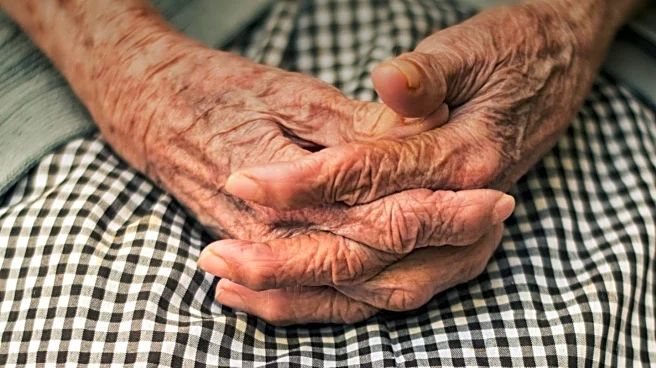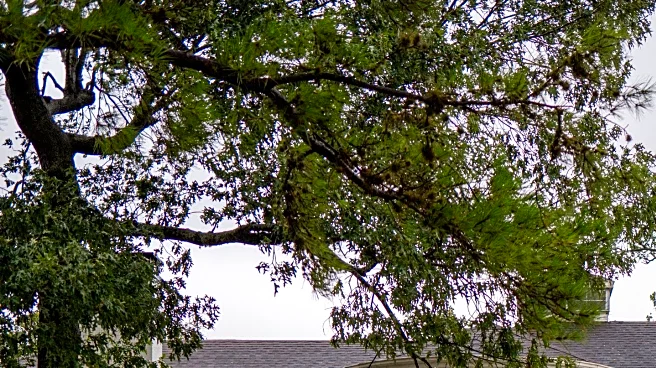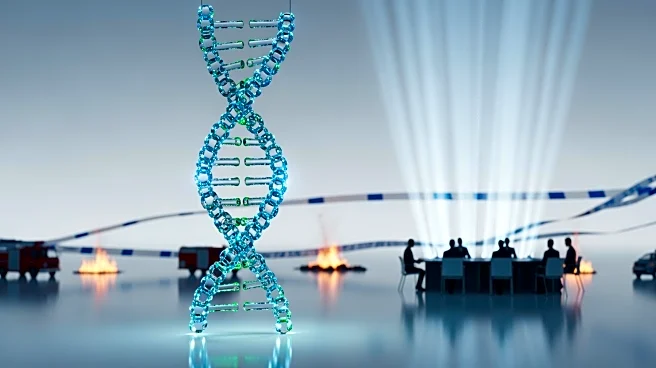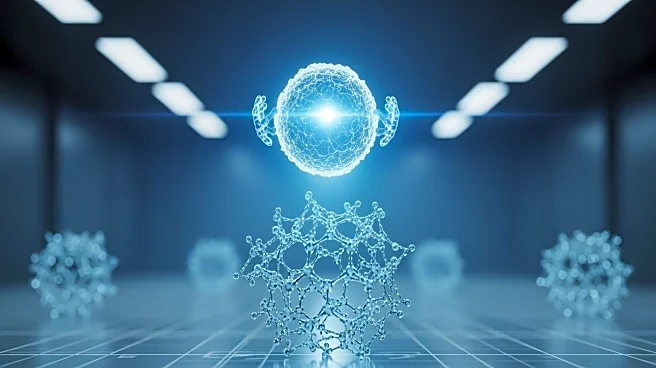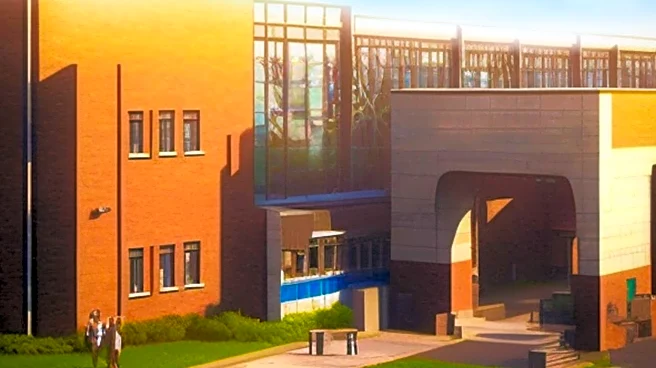What's Happening?
A recent multicenter phase 2 trial has explored the efficacy of a treatment regimen combining granulocyte colony-stimulating factor (G-CSF) with venetoclax and azacitidine (VAG) in patients with newly diagnosed acute myeloid leukemia (AML) who are unfit
for intensive chemotherapy. The study involved 38 participants and demonstrated a composite complete remission (CRc) rate of 81.6% after one cycle of induction therapy. The trial, conducted under the guidelines of the European Leukemia Net 2022, showed that the VAG regimen significantly improved remission rates compared to the venetoclax and azacitidine (VA) regimen alone. The median overall survival was 17 months, with favorable and intermediate-risk groups showing better outcomes than the adverse-risk group.
Why It's Important?
The findings of this study are significant as they offer a potential new treatment option for elderly AML patients or those with comorbidities who cannot undergo intensive chemotherapy. The VAG regimen's ability to achieve high remission rates and improve overall survival could change the standard of care for this patient population. The study also highlights the potential of G-CSF to enhance the efficacy of existing AML treatments, which could lead to better management strategies and improved patient outcomes. This development is crucial for healthcare providers and patients seeking effective and less intensive treatment options.
What's Next?
Further research is needed to confirm these findings in larger, randomized controlled trials. The ongoing trial (ChiCTR2300078290) aims to compare the VAG regimen with the VA regimen in a broader patient population. If successful, this could lead to a shift in treatment protocols for AML, particularly for patients who are not candidates for intensive chemotherapy. Additionally, understanding the mechanisms by which G-CSF enhances treatment efficacy could open new avenues for therapeutic interventions in AML and other hematologic malignancies.





